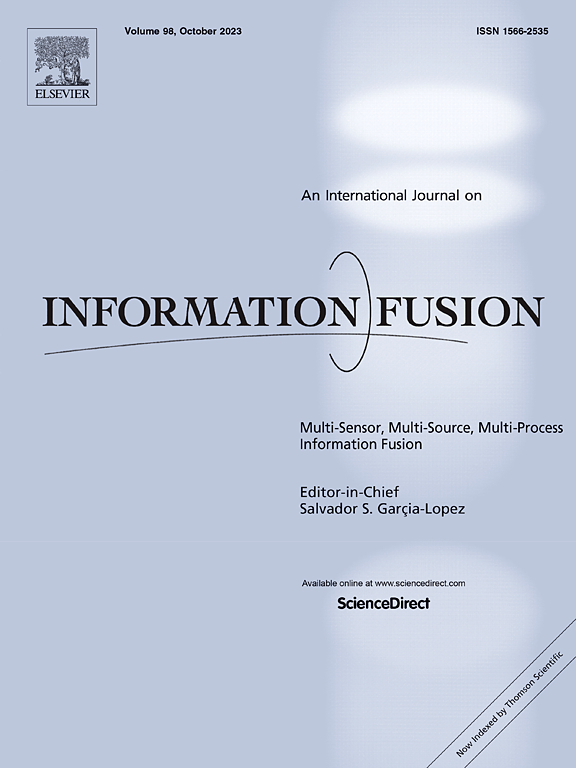Weakly Supervised RGBT salient object detection via SAM-Guided Label Optimization and Progressive Cross-modal Cross-scale Fusion
IF 14.7
1区 计算机科学
Q1 COMPUTER SCIENCE, ARTIFICIAL INTELLIGENCE
引用次数: 0
Abstract
Current fully supervised RGB-Thermal salient object detection (RGBT SOD) methods rely on labor-intensive pixel-wise annotations. This work explores weakly supervised RGBT SOD using scribble annotations to reduce the annotation cost. Existing scribble-supervised methods mainly rely on pseudo-labels, which often suffer from issues such as information redundancy, incomplete objects, or inaccurate boundaries. Inspired by the advanced Segment Anything Model (SAM), we propose a two-stage SAM-Guided Label Optimization method to obtain accurate pseudo-labels. The first stage employs the prompt-based segmentation ability of SAM to generate initial masks from RGB and thermal images, while the second stage refines these initial masks using the zero-shot segmentation capability of SAM and complementary information from RGB and thermal modalities. Moreover, existing multi-modal fusion methods might not fully synergize the interactions between channel and spatial dimensions, and they often neglect effective cross-scale feature collaboration during the multi-modal fusion. To address this, we propose the Progressive Cross-modal Cross-scale Fusion Unit (PCCFU), which fuses same-level multi-modal features while progressively integrating higher-level features. PCCFU consists of the Dual Cross-attention Fusion Module and the Cross-scale Aggregation Module. The former facilitates synergistic interactions across both the channel and spatial dimensions, while the latter interacts individually with each higher-level feature during multi-modal feature fusion. Extensive experiments indicate that our method outperforms most fully supervised RGBT SOD approaches and surpasses the previous state-of-the-art weakly supervised method, achieving average improvements of 3.4% in mean F-measure () and 21.5% in mean absolute error () across three benchmark datasets. The code is available at: https://github.com/tzz-ahu.
求助全文
约1分钟内获得全文
求助全文
来源期刊

Information Fusion
工程技术-计算机:理论方法
CiteScore
33.20
自引率
4.30%
发文量
161
审稿时长
7.9 months
期刊介绍:
Information Fusion serves as a central platform for showcasing advancements in multi-sensor, multi-source, multi-process information fusion, fostering collaboration among diverse disciplines driving its progress. It is the leading outlet for sharing research and development in this field, focusing on architectures, algorithms, and applications. Papers dealing with fundamental theoretical analyses as well as those demonstrating their application to real-world problems will be welcome.
 求助内容:
求助内容: 应助结果提醒方式:
应助结果提醒方式:


